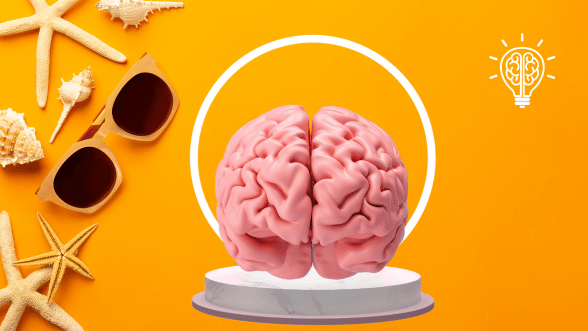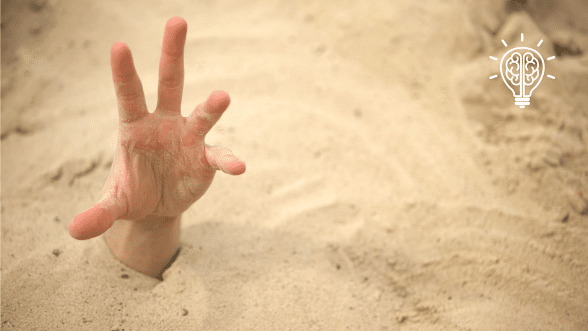What Are Transitions?
Transitions refer to the process of shifting from one state, activity, or phase of life to another. These shifts happen at different levels, from small daily adjustments to major life changes. While transitions are a normal part of life, they can be **mentally and emotionally challenging**, especially when executive function skills are underdeveloped.
There are two primary types of transitions:
- 🔄 Task Transitions (Micro-Transitions): Small, frequent shifts throughout the day, such as switching from one work task to another or shifting focus between activities.
- 🌍 Life Transitions (Macro-Transitions): Significant life changes, such as moving to a new city, changing careers, or adjusting to a major lifestyle shift.
Both types of transitions require cognitive flexibility, planning, and emotional regulation—key executive function skills that help individuals adjust smoothly and efficiently.
How Transitions Relate to Executive Function
Executive function skills play a crucial role in handling transitions, as they help us:
- 🔄 Shift attention smoothly: Moving from one task or life phase to another without getting mentally “stuck.”
- 📅 Plan and organize: Structuring routines and schedules to accommodate new responsibilities.
- 🚀 Regulate emotions: Managing stress, anxiety, or resistance to change.
- ⏳ Initiate new activities: Overcoming procrastination and mental blocks when starting something new.
When these skills are strong, transitions feel natural and manageable. But when executive function challenges exist, transitions can lead to stress, procrastination, and difficulty adjusting.
Task Transitions vs. Life Transitions
Though both involve shifting from one thing to another, task transitions and life transitions impact daily functioning differently.
Task Transitions
Task transitions occur multiple times a day and affect short-term focus and productivity. Examples include:
- 🔄 Switching between different work tasks.
- 📩 Moving from answering emails to deep-focus work.
- 🚪 Shifting from one meeting to another.
- 📱 Struggling to get back to work after checking social media.
When poorly managed, task transitions can lead to **lost time, mental fatigue, and reduced efficiency. Learn more about how to improve task transitions.
Life Transitions
Life transitions are larger shifts that require adaptation over weeks, months, or even years. Examples include:
- 🎓 Graduating from school and starting a new career.
- 💼 Changing jobs or moving to a new city.
- 💍 Getting married, divorced, or experiencing major relationship changes.
- 📅 Adjusting to parenthood, retirement, or a new life phase.
Since life transitions require long-term adaptation, they often trigger stress, uncertainty, and decision fatigue. Learn more about how to navigate life transitions.
Common Challenges with Transitions
Both task transitions and life transitions can be difficult due to:
- 🚪 Difficulty shifting focus: Feeling stuck between tasks or struggling to let go of the past.
- ⏳ Mental fatigue: Too many transitions draining cognitive energy.
- ⚡ Dopamine-driven distractions: Switching to easy, quick-reward tasks instead of important ones.
- 📅 Poorly structured workflows: Lack of planning, making transitions feel chaotic.
Strategies to Make Transitions Smoother
✅ 1. Use Transition Cues
Help your brain recognize when it’s time to switch by using structured cues:
- 🔔 Set a timer or reminder before switching tasks.
- 🎶 Use a specific sound, song, or alarm to signal a transition.
- 📌 Close open tabs or clear your workspace to prepare for the next task.
✅ 2. Plan for Transition Time
Most people underestimate how long transitions take. Build buffer time into your schedule:
- ⏳ Allow 5-10 minutes between meetings or deep work sessions.
- 📅 Plan for adjustment periods when entering a major life transition.
✅ 3. Reduce Unnecessary Transitions
Some transitions waste time and energy. Minimize unnecessary shifts by:
- 📩 Checking emails at set times instead of constantly throughout the day.
- 📋 Batching similar tasks together to maintain momentum.
- 📱 Limiting distractions that pull you into frequent, unplanned transitions.
✅ 4. Strengthen Cognitive Flexibility
Since transitions require adaptability, improving cognitive flexibility can help:
- 🧠 Reframe change as an opportunity for growth.
- 🌿 Practice mindfulness to reduce transition-related stress.
- 🔄 Be open to adjusting plans instead of resisting change.
Final Thoughts: Mastering Transitions for a Smoother Life
Transitions are a natural part of life, but they don’t have to feel overwhelming. By improving executive function skills like cognitive flexibility, planning, and emotional regulation, you can navigate both task transitions and life transitions more smoothly.
Want to dive deeper? Explore our related entries on:
- 🔄 Task Transitions: Strategies for smoother daily shifts.
- 🌍 Life Transitions: How to handle major life changes.
📞 Need personalized support? Contact us for executive function coaching today!




